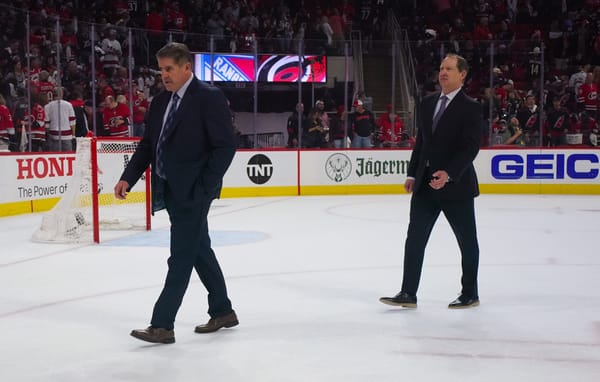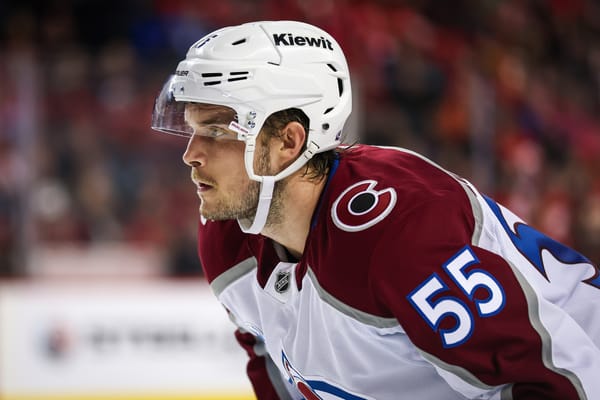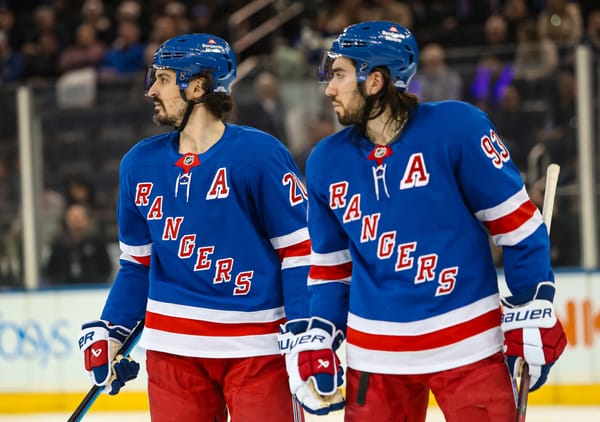The Rangers continue to manufacture a homegrown roster while eying a championship
In taking a page from the league's elites, the Rangers are stabilizing their franchise.
The Los Angeles Kings have figured out. The Chicago Blackhawks have figured it out. The Boston Bruins have figured it out. And now, it appears as if the New York Rangers have figured it out.
There's no one bona fide path to winning a Stanley Cup. In reality, the ability to navigate an 82-game regular season, followed by having to win 16 playoffs games requires a bit of luck along the way. Things have to fall in place. Heck, watching the Rangers end up as the last team standing in the Eastern Conference a year ago is as good an indicator of that as ever.
Yet there are things and trends some teams are picking up on, and it should come as no surprise that two teams have claimed the last four Stanley Cups, while the Bruins, who were the last team to win before Los Angeles and Chicago, are perennial contenders.
Aside from the more specific concepts—these are deep teams that drive puck possession with strong special teams—there's another common thread among the league's elites, and the Rangers officially qualify in that regard as well. In constructing a team fit to win a championship in hockey, it requires identifying and stockpiling homegrown talent, while using the surplus players to trade for top-end talent, and spending wisely in free agency.
On Monday, as the Rangers solidified their 2014-15 roster, the theme rang loud and true. With options like Matthew Lombardi, Chris Mueller, and other outsiders in tow, the Rangers kept it in-house. Instead of incorporating new names, the Rangers elected to keep Anthony Duclair (2013 draft), J.T. Miller (2011 draft), Jesper Fast (2010 draft), and Kevin Hayes, not a draft pick of the team, but a prospect plucked straight out of the college ranks.
 More on team building
More on team building 
 More on team building
More on team building 
The rest of the roster falls under similar distinctions. Of the 24 players who will begin the regular season on the Ranger roster, 12 were originally drafted by the team. Five were acquired via trade, three of which (Rick Nash, Martin St. Louis, and Kevin Klein) were swapped almost exclusively for players the Rangers drafted: Brandon Dubinsky, Artem Anisimov, Tim Erixon (acquired via trade for draft picks and a prospect), Ryan Callahan, and Michael Del Zotto.
The remaining seven players? Hayes takes up one of those spots, while the other free agents, for the most part, are overwhelmingly underwhelming when it comes to the circumstances of their signings. Guys like Cam Talbot, Lee Stempniak, Tanner Glass (we're not going to beat a dead horse, and until Glass starts negatively effecting the Rangers, leave it alone), and heck, even Mats Zuccarello was an under-the-radar move when he inked.
Dan Boyle marks the only marquee free agent to have come aboard, and also represents that aforementioned "spending wisely in free agency." The Rangers identified a need: a right-handed defenseman who could play on the second pairing, and help bolster the power play. When dealing in free agency, the best approach is filling niches, and smaller holes, and not trying to overhaul an entire roster. Not in hockey.
This process begins with the ability to identify talent. The Rangers draft record, dating back to 2004, has been very solid. In that draft, the Rangers selected Al Montoya, Lauri Korpikoski, Dubinsky, and Callahan, who have appeared in a combined 1,459 NHL games. A year later, in 2005, the team selected Marc Staal and Michael Sauer, two players that figured to be cornerstones on the Rangers blue line, and would have been, if not for a career-ending injury to the latter. In 2006, it was Anisimov, followed a year later by Carl Hagelin, and a year later by Derek Stepan, Del Zotto and Dale Weise.
And this trend continued. The Rangers don't go through drafts without taking at least one player who seems to make an impact or at the very least hang around at the NHL level. And even if the entire list isn't still in New York, those players still have an influence on the Rangers organization. That's where you're able to spring and acquire a Nash, or a St. Louis, in using the assets you've assembled for the difference makers. This philosophy is what's made the league's top teams so successful.
What's more is, the Rangers don't need to be reminded of what the other, unsuccessful end of this experiment looks like. There were summers of blockbuster signings like Scott Gomez (who didn't turn out all bad), Chris Drury, and Wade Redden. Organizationally, where the team is at now is a far cry from that trio when one incorporates the likes of Duclair, Pavel Buchnevich, and Brady Skjei. How will the Rangers replace Henrik Lundqvist? Well the team took its first steps to that process whenever it needs to take place, drafting Brandon Halverson and Igor Shesterkin this summer.
This brand of team-building isn't entirely new to the Rangers or their fans. But on Monday, the team once again reiterated its stance when it comes to roster construction, one that should elicit confidence considering the direction the team has gone in since 2004.




